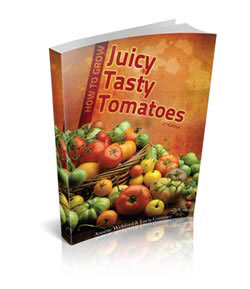What you can do with Fennel
Fennel is a much maligned vegetable that grows wild in some parts of the world. It is an outcast in the average vegetable garden because it is not a good companion for any other vegetables. Furthermore, many people find its distinct aniseed flavour abhorrent.
However fennel does have its uses, both medicinal and culinary, and it is incredibly easy to grow.
The Benefits of Fennel
Fennel has amazing anti-inflammatory, antioxidant and some say anti-cancer properties. It is packed with fibre and it is particularly high in essential Vitamins A and C.
Traditionally fennel has been used to relieve a variety of gastric ailments, including constipation, but it is also very useful for treating cramps, fever, rheumatism, diabetes and obesity.
You can:
- Mix 45g of chopped leaves with one litre of water; boil, cool and use to bath sore or itchy eyes.
- Drink 350-400ml of this same brew every day as a tonic for memory and digestion.
- Grate the root and heart of the plant; mix with a tablespoon of bran, and take before meals as a natural laxative.
- Finely crush two teaspoons of the highly antiseptic seed and steep briefly in boiling water; use to expel poisons after a dog, snake or severe insect bite.
- Use chopped leaves as a poultice to help disinfect and treat a suppurating wound.
- Make fennel tea by steeping about 10ml of chopped leaves in a cup of boiling water for a few minutes; drink three times a day to aid slimming.
What is Fennel?
The short answer is that it is a vegetable, a herb, a spice, and an invaluable ingredient in herbal remedies.
Referred to a bulb fennel as well as Florence fennel (finocchio), it is one of the most versatile plants you grow in your garden. Not only does it have a multitude of uses, but you can use every part of it. Often referred to as a type of herb, the leaves and seeds of fennel plants may be used as seasoning, the root makes and excellent laxative, and the bulb at the base of the stem may be added to salads, cooked or used as part of medicinal remedies. So in addition to being a vegetable and a herb, it is also categorised as a type of spice.
Growing Fennel
Fennel is a perennial plant, and can be sown from seed (although once it has been planted, it will continue to self sow itself for years, spreading without invitation). It is not particular about the soil it grows in and with minimal care and attention will quickly reach a height of 1.5 m or more. It does however benefit from the addition of compost and some good mulching during winter. This is essential if you plan to eat the bulb as a vegetable or salad ingredient.
You can trim the thin feathery leaves of fennel at any time during growth. To harvest the bulb at the base of the stem, cut about the ground, leaving the roots in the soil.
Don’t grow it anywhere near dill because they will cross pollinate. Don’t grow it near any of the brassicas because it often makes them bolt. In fact if you can, grow it away from any other herbs of vegetables.
Eating Fennel
There are many recipes for cooking the fennel bulb (or heart). To prepare, cut off the upper stems and leaves and remove the stringy exterior. This is the same procedure you would follow to prepare celery for cooking (incidentally it may be cooked in the same way as celery hearts).
Some quick and easy recipes include cooking quartered fennel bulbs in a little olive oil to which a clove or more of garlic plus salt and pepper has been added. After about 10 minutes add about 100ml or more of chicken stock and simmer slowly for about 20 minutes until tender.
You can also sauté fennel. Slice it thickly and then sauté in butter (covered) for about six minutes, shaking the pan occasionally so it doesn’t stick. Remove the pan lid and continue cooking for several more minutes until most of the liquid has evaporated. Place the cooked fennel in a serving dish. Rinse and dry the pan and cook a cook tablespoon of fresh parsley and other herbs in butter. Add a little lemon rind and juice; mix and pour over the fennel.
Another delicious way of serving fennel is to quarter and cook the bulbs, simmer in salted boiling water until tender, drain and then add to a pan with melted butter. Make a classic béchamel sauce with butter, flour, milk and cream; pour over the fennel, sprinkle with finely grated Gruyere cheese, and brown in a medium oven for about six minutes.
If you like the raw aniseed flavour of fennel, use the chopped leaves and finely sliced bulb in potato or green salads. The seeds may be heated in a little oil before you make stews and casseroles to add flavour.
Tags: bulb fennel, fennel, finocchio, FLorence fennel












